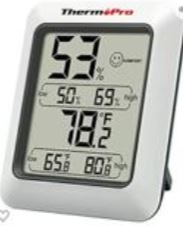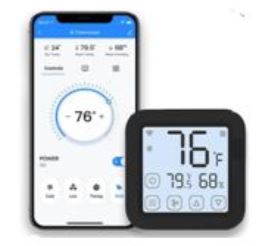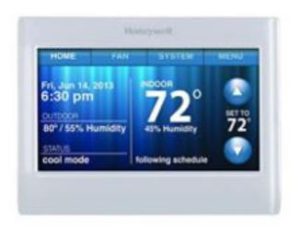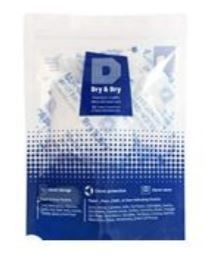If your power goes out, when it comes back on, check your indoor humidity. Without electricity you have not had air circulation or removed moisture from the air with air conditioning or a dehumidifier. The average relative humidity in Florida is 74.5%. A perfect indoor humidity is around 50%. When it goes much higher or lower than that, it can cause health issues over time. In Florida, one of our biggest problems is mold.
After major storms or hurricanes
A few years ago, we lost power for a week after a hurricane. After a few weeks of having air conditioning back on and using a dehumidifier, we started finding mold in drawers and closets. The humidity is typically higher after a hurricane. This is especially true when there is flooding and a lot of water lying around the home. But even when there are no storms, the humidity at night is high. At night, Florida can get 80 to 100 % humidity levels. And if your windows are open, you are letting all that humidity into the house.
How to test the humidity
If you do not have the tools there are signs you have high humidity in your home. ₁
Hygrometers are small tools you can use and move from room to room. “Hygrometers (relative humidity gauges) may not be accurate. Mechanical hygrometers are frequently in error by more than 20 percent. Calibrate your hygrometer by sealing it in a plastic bag along with a cup containing ½ cup of water and ¼ cup of table salt. After at least 12 hours at room temperature, the meter should read 75 percent relative humidity. Electronic meters tend to be more accurate, but they should also be calibrated.”₂ For details on calibrating, click here (Figure 3, page 4).

Some “smart” thermostats and electronic controls provide access to humidity levels to your phone. When humidity gets too high when you are away from home, you can adjust the thermostat to operate the air conditioner and lower the moisture level.


To test the humidity in your walls, you can hire a professional or use a moisture meter. Be very careful to follow the directions if you purchase a meter. According to trainings offered by the Indoor Air Quality Association, some have small pins that can be broken if inserted too far into the wall or with too much force.

What happens when humidity is too high
Having too much moisture can allow mold to grow quickly but it can also increase the number of pests in your home. Dust mites and other pests like the moisture. Large amounts of moisture can cause damage to the structure of the home and cause “rotting.” So to protect your health and protect the value of the home, it is important to control the humidity.
You can help control humidity by using the air conditioner, a dehumidifier or purchasing moisture absorbing packets. These can all become costly but may be necessary to remove moisture.

What to do if you find mold or mildew
If the mold covers more than 3 feet x 3 feet square, it is recommended to hire a professional. Make sure they are licensed and ask for references.
To control mildew click here. (This is a UF IFAS Extension EDIS fact sheet on mildew)
To clean mold click here. (This is a list of educational materials on mold from the CDC)
So, if your power goes out, remember after it comes back on, check the humidity levels in your home!
 0
0
